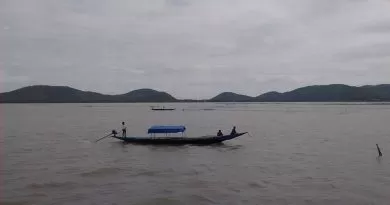Odissi to Gotipua: Different dance forms of Odisha

In India, different types of dance forms exist. The state of Odisha too have many forms of dance, which are unique to one another.
Odissi Dance
Odissi is an ancient classical dance form which originated in the temples of Odisha. Historically, Odissi has been predominantly performed by women. Odissi expresses ideas of other traditions such as those related to Hindu gods. The classical dance form is a performance art where the artiste and musicians play out a story or devotional poem through abhinaya (expressions) and mudras (gestures and sign language). As a dance form having a different aesthetic style makes it attractive to the viewers.
Chhau Dance
It is a dance form of the primitive time, considered to have originated from the Mayurbhanj district in Odisha. The Chhau Dance form was established as a mock fight by the Odia paikas (warrior), who graciously fought in rhythm to the musical instruments. The dancers are recognised to be worshippers of God Shiva and Goddess Paravati. A mask is worn by the dancers to present the sentiments of the dance form and convey the distinctiveness of the dance to the viewers appropriately.
Dalkhai Dance
During the occasion of Dussehra, the Sambalpuri Dalkhai Dance form is the most popular in Odisha. While the women perform the dance, the men join them in the performance as drummers and musicians. The dance begins with the dhol of the drummers and singing of songs by the women.
Gotipua Dance
The most famous Odissi Dance is said to have originated from this classical form of dance called Gotipua dance. The name Gotipua stands as “Goti” means single and “Pua” means boy. The dance is performed by young boys who dress up as women in order to show their gratitude towards Lord Krishna and Lord Jagannath. The boys wear costumes, pieces of jewellery, bindis to perform the dance in the most sophisticated manner removing the conservative thought that only women can perform a dance.
Ghumura Dance
Traditional folk dance of the Kalahandi district, Odisha, the Ghumura Dance has gained a lot of popularity in the western parts of Odisha. It is performed by male dancers, wearing native outfits, and is believed to evolve from a war dance to a totally different kind of dance form encouraging social and cultural activities. The costumes of this dance form are similar to tribal dance, but the mudras and postures show resemblance with the classical dance forms of India.
Bagha Dance
Also known as the Tiger dance of Odisha, the Bagha Dance is enjoyed by a wide variety of people in Odisha. It is a kind of a vigorous dance, and this type of dance form is performed by experts mainly on special events and occasions. As it is a tiger dance, the guy performers paint their bodies with yellow and white colors just like a tiger along with the stripes and tails to depict the appropriate perspective to the viewers.
Karma Naach
The Karma Naach or the Karma Dance of Odisha is a popular dance form in the scheduled castes and tribes in the districts of Balangir, Kalahandi, Sundargarh, Sambalpur and Mayurbhanj. The word “Karma” means fate in Kosil Oriya and the Karma dance is performed to worship the God and Goddess of fate – Karam Devta and the Karamsani Devi. People in Odisha believe them as the God for all the good as well as the bad fortune happening in their lives.



